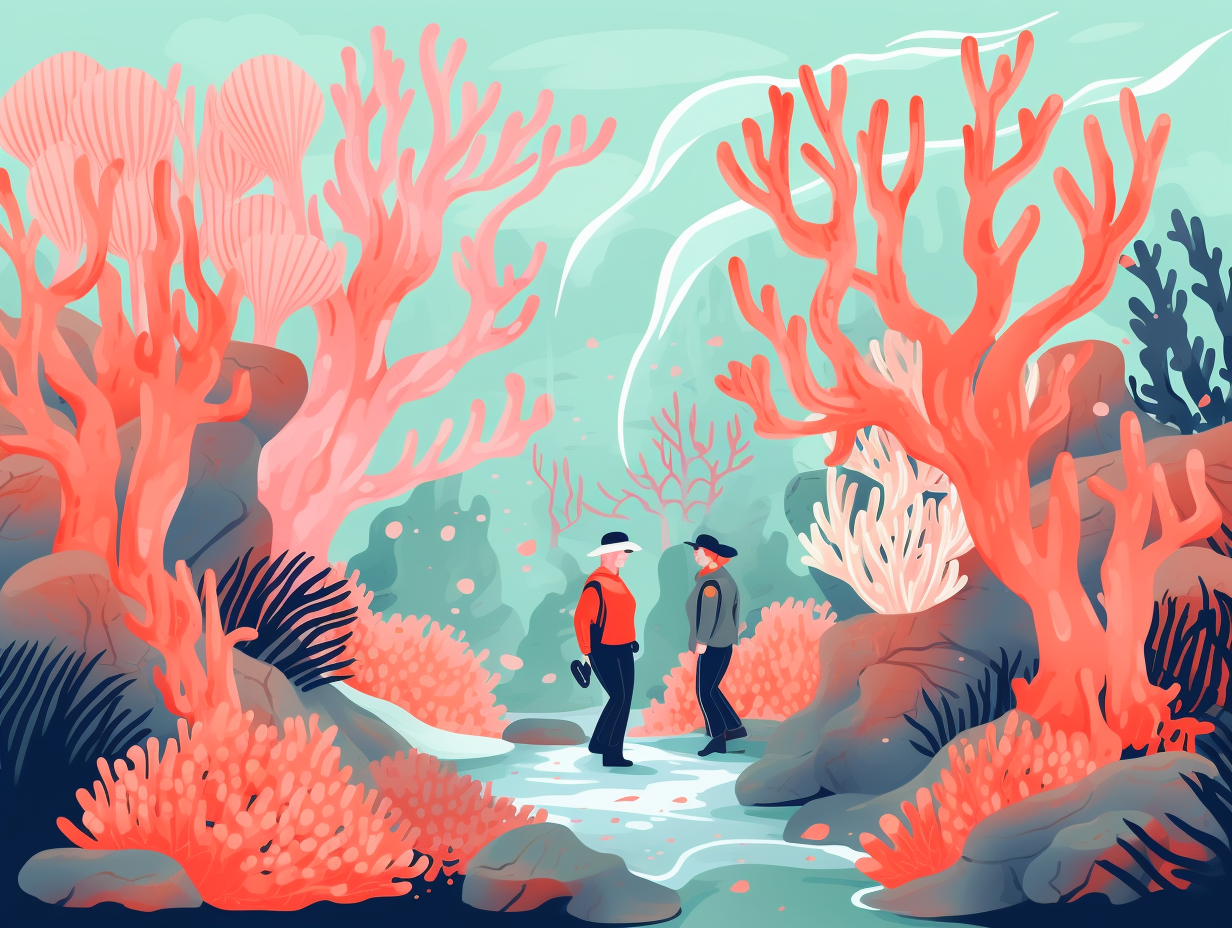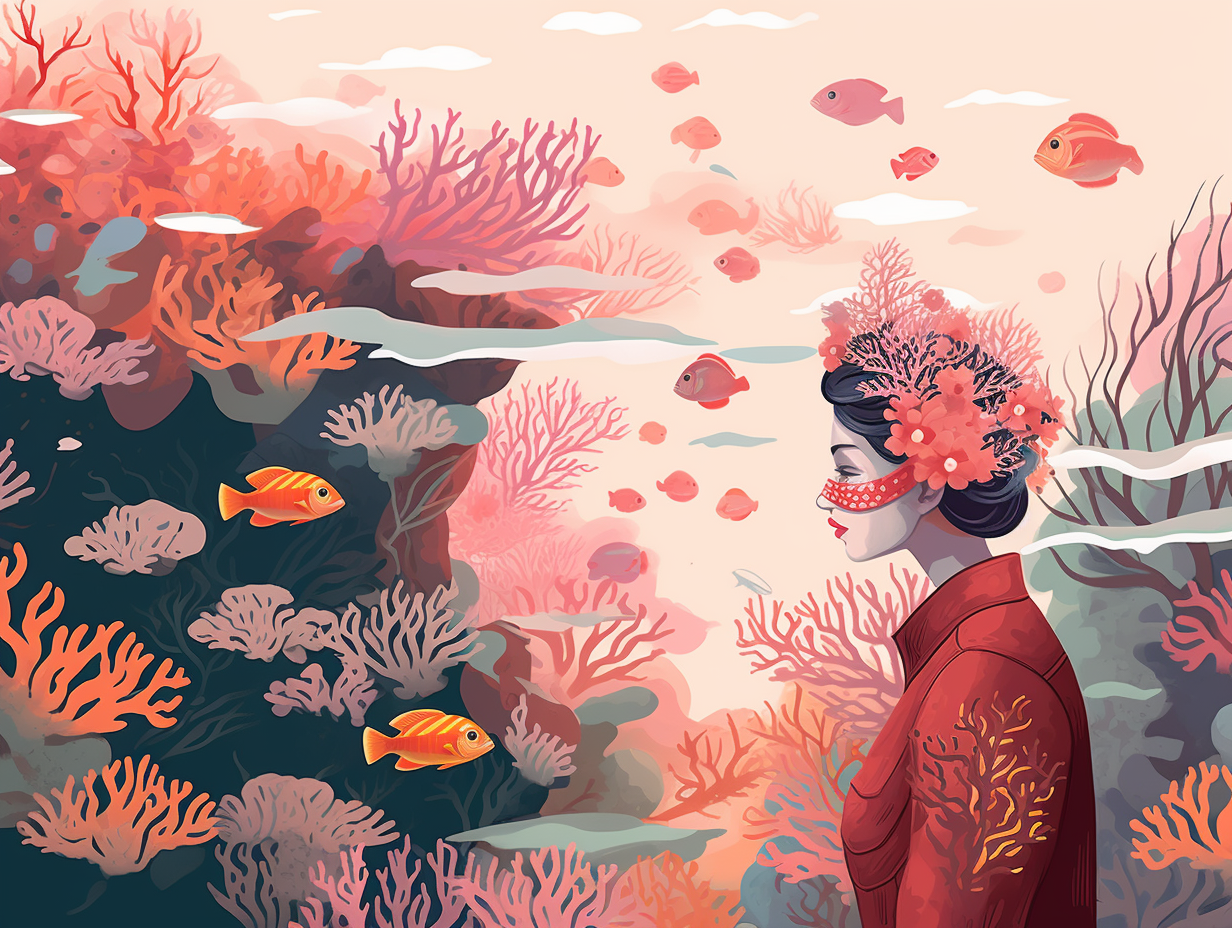Discover the Top 10 Astonishing Fun Facts About Coral Bleaching: Unveiling Nature's Mysteries

1. Chilly Coral Breakups
Brrr, who turned down the thermostat? Coral reefs are feeling a bit frosty! In a chilling turn of events, it seems our tropical friends aren't just worried about feeling the heat: Coral bleaching can actually occur due to extreme cold temperatures, as evidenced by a shiver-inducing event in January 2010 when frigid waters in the Florida Keys caused widespread coral bleaching and even some death. Scientists are now bracing themselves for the possibility that cold-stress events might leave coral reefs just as vulnerable to disease as warmer waters do.
Source => oceanservice.noaa.gov
2. Coral Roommate Drama
It's hard out here for a polyp: it's not always sunshine and rainbows when you're a colorful coral trying to survive in today's oceans. When things get heated, a reef can experience the ultimate roommate fall-out, a phenomenon known as coral bleaching: This occurs when warmer ocean temperatures or pollution stress corals, leading to the loss of their vibrant, nutrient-providing algae friends called zooxanthellae. Fear not, though, for if the bleaching isn't too severe, our coral can bounce back and reconcile with their algae buddies!
Source => oceanservice.noaa.gov

Dive into the depths of the Mariana Trench and discover the incredible pressure that awaits you, equivalent to having five jumbo jets stacked on top of you! Uncover more mind-blowing ocean facts 🌊
=> Fun Facts about The-Ocean
3. Buddy Comedy: Reef Edition
Coral reefs and their algae BFFs are like a classic buddy comedy: when times are good, they're painting the ocean with vibrant colors, but when the drama starts to heat up, they're prone to some epic ghosting: Coral bleaching occurs when sensitive corals expel their symbiotic algae friends, known as zooxanthellae, due to stress caused by temperature changes or water pollution, leading to a weakened ecosystem and a less colorful underwater world.
Source => camelclimatechange.org
4. Ghostly Coral Makeovers
Who you gonna call? Coral Bleachers! When corals start feeling the heat, they kick out their colorful little roommates and turn into ghostly versions of themselves: Coral bleaching is the process wherein stressed corals expel their zooxanthellae, causing the colony to turn white and potentially die, as these algae provide essential nutrients that the coral needs to survive and build their magnificent structures.
Source => oceanservice.noaa.gov

5. Big Brother: Coral Edition
Imagine if Big Brother was a coral reef enthusiast, monitoring the seas 24/7 to save the fragile underwater world: Satellite remote sensing has become an essential tool for coral reef managers and scientists to keep an eye on and predict bleaching events around the globe, all thanks to Coral Reef Watch's free, near real-time monitoring of sea surface temperature changes. Boy, corals can't keep any secrets these days!
Source => coralreefwatch.noaa.gov
6. Underwater Breakup Stress
When corals get "stressed out" from their daily grind, they decide to ditch their roommates, the colorful zooxanthellae, in a classic underwater breakup: This phenomenon, known as coral bleaching, occurs when corals lose the vital zooxanthellae that provide them with nutrients, waste removal, and their vibrant colors, ultimately weakening the corals and leaving them vulnerable to disease or death.
Source => oceanservice.noaa.gov
7. Coral Timeshare Masters
Coral colonies may have been the original masterminds behind the idea of a timeshare, considering they have a full-time, in-house food provider called zooxanthellae, who use sunlight to whip up a mean coral cocktail: However, contrary to popular belief, corals don't solely rely on their sunbathing buddies for building their calcium carbonate homes. Instead, they engage in a process known as biomineralization, which involves absorbing calcium and carbonate ions from seawater and using enzymes to craft exquisite, crystalline real estate.
Source => oceanservice.noaa.gov
8. Frosty Algae Split
When Mother Nature turns down the thermostat and gives corals the cold shoulder, they're not just shivering - they're going through a frosty breakup with their algae partners: Coral bleaching can also occur due to cold temperatures, such as the 2010 Florida Keys event, where water temperatures dropped 6.7 degrees Celsius below average, resulting in some corals dying, proving that extreme changes in water temperature, not just warmer ones, can wreak havoc on these delicate ecosystems.
Source => oceanservice.noaa.gov
9. Reef's Hard-Knock Life
It's a hard-knock life for corals when they're feeling a little...pale: Coral bleaching not only results in widespread coral mortality but also triggers a devastating domino effect, leading to a significant decline in three-dimensional reef structural complexity. This loss deeply impacts the entire reef ecosystem, including fish diversity, and even hinders the reef's capability to rebuild itself. Fear not, researchers are keeping tabs on it all, utilizing advanced photogrammetry techniques to assess the damage and keep our fishy friends afloat!
Source => nature.com

10. Aussie Coral Pranksters
"Surf's up, but reef's down under": Australia's not just home to the Great Barrier Reef and kangaroos; turns out it's a hot spot for coral bleaching too! Even the less famous spots like NW Australia's Kimberley reefs and the Pilbara region have faced these pesky, colorful corals turning white, with severe bleaching observed in the Pilbara during El Niño and La Niña conditions in 2021-2022. Who knew mother nature was such a prankster eh?
Source => aims.gov.au
Related Fun Facts




















